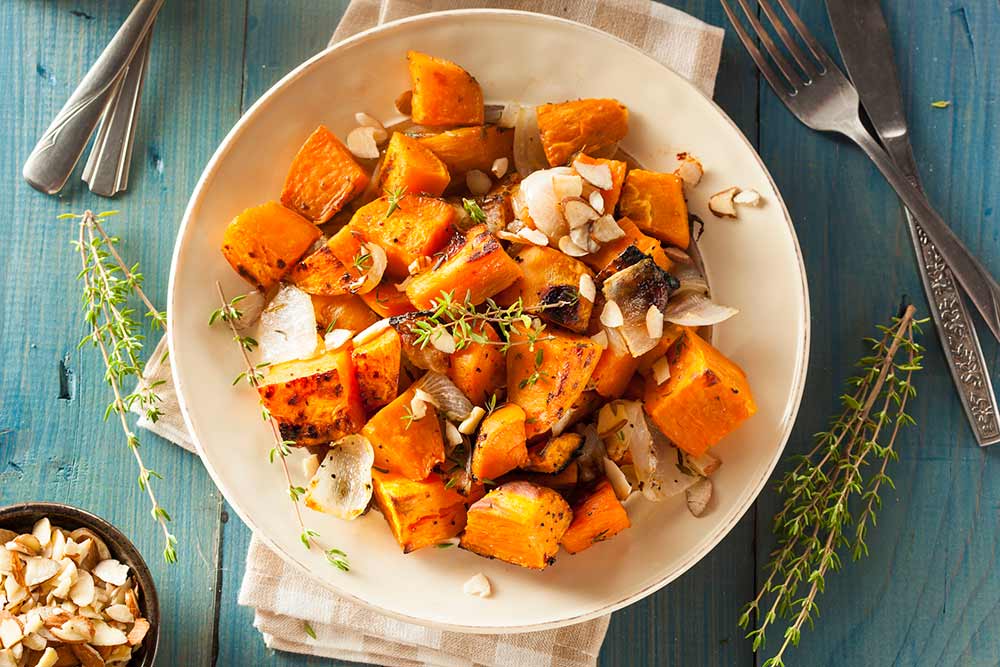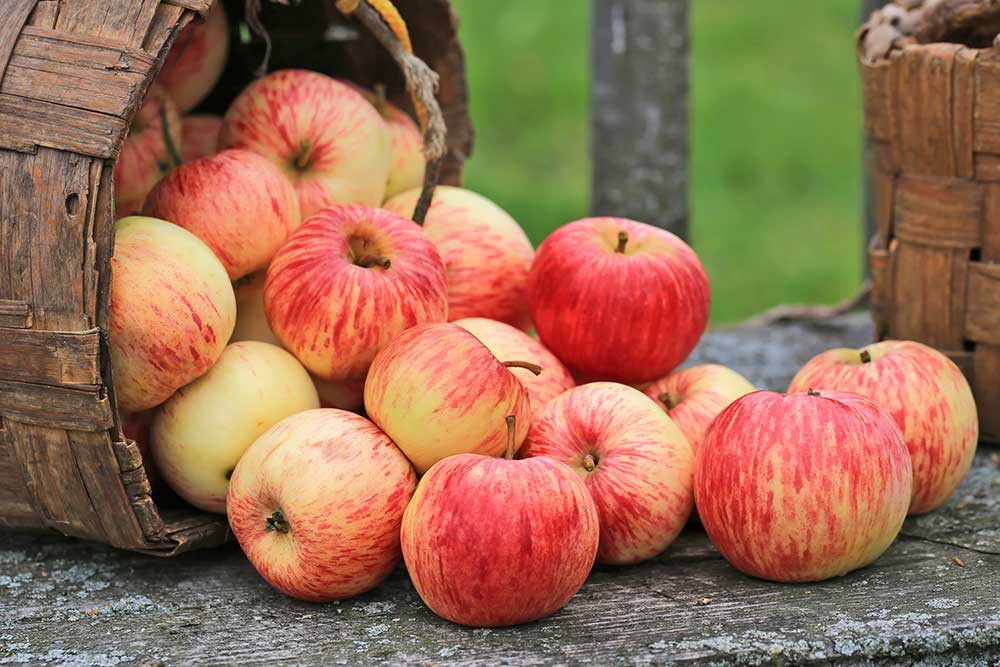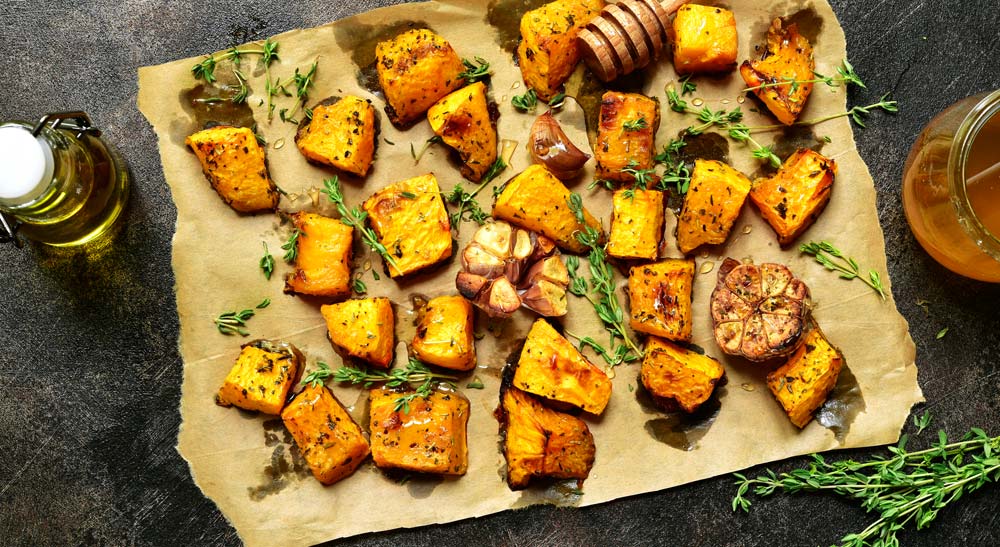By Dr Michael Fenster | Published on September 13, 2017
A fundamental principle of my Grassroots Gourmet approach to food and health is to get closer to the delicious essence of authentic food by reconnecting with nature.
A simple and often economically beneficial way to do this is to observe the natural local bounty that accompanies seasonal change.
Below are five nutrition-filled fall foods guaranteed to please your palate.
Anti-inflammatory power
Winter squash was a fall favorite long before the pilgrims arrived. It’s one of the best source on the planet for carotenoids, including alpha- carotene, beta-carotene, lutein, zeaxanthin and beta-cryptoxanthin.
The fiber found in these vegetables is an important food source for our gut microbiome; a symbiotic organ that is critical for maintaining our health. Additionally, certain starches found in winter squash contain homogalacturonan, and these types of polysaccharides have shown antioxidant, anti- inflammatory and insulin-regulating properties.
The B-complex vitamins are also critical for regulation of blood sugar levels and winter squash provides a good amount of vitamins B1, B3, B6, and pantothenic acid and folate.
In addition to supplying vitamin C, manganese and the essential omega-3 fatty acid alpha linolenic, the Cucurbitaceae genus of plants contain cucurbitacins, which are glycoside molecules that are also found in Brassica vegetables, some mushrooms and mollusks. The result is less obesity and diabetes, a reduction in certain types of cancers and an improvement in overall cardiovascular health.
Eat it a tasty way
Try it in a curried butternut soup or use the roasted squash as a taco filling.
Antioxidant hero

Sweet potato is another great source of beta-carotene. True sweet potatoes (Ipomoea batatas) should not be confused with yams (Dioscorea batatas), to which they are not even remotely related. In the United States there are two main varieties, one with white and one with orange flesh. The sporamins are the storage proteins unique to the sweet potato.
Recent research has focused on the powerful antioxidant properties of these compounds. Along with other phytonutrients found in the sweet potato, studies suggest that consumption of these vegetables can result in a powerful anti-inflammatory effect.
Also, the effects of fiber along with other compounds found in sweet potatoes can aid to improve the body’s ability to handle glucose. Despite the palate-pleasing sweetness, even those suffering from type II diabetes may benefit from the ability of sweet potatoes to aid in blood sugar regulation.
Eat it a tasty way
Try some baked sweet potato fries with a bit of chili spice.
Bone strength
Green beans deserve much better treatment than being drowned in soup from a can and buried alive with unidentified fried objects. They are a rich source of B-complex vitamins like vitamin B6 and B2.
They are also a good source of essential minerals like manganese and silicon, which are essential for healthy bones, joints and connective tissue. They are also a good source of antioxidant compounds like phenols, and flavonols like quercetin, kaempferol, catechins, epicatechins and procyanidins.
Green beans are also a source of the essential omega-3 fatty acid alpha- linolenic, and all this powerful anti-inflammatory action, unsurprisingly, is associated with reductions in cardiovascular complications and type II diabetes.
Eat it a tasty way
Try some lightly steamed green beans in a quick salad with sliced apple, lemon, basil and toasted pine nuts.
– RELATED: How To Lower Cholesterol Levels Naturally –
Heart food

Few things are as emblematic of fall as the iconic apple. And it’s the whole apple that is important to consume.
Studies have shown that you cannot get the benefits associated with consuming the fruit in its whole form when you substitute it with apple sauce, apple juice or even the pectins alone. These benefits include an improvement in blood glucose levels. Through a holistic interaction involving fiber, pectins and other phytocompounds found only in the whole fruit apple, consumption is associated with an improvement in blood lipid levels and thus reduces the risk of cardiovascular disease.
And it’s not only the cardiologist that the apples can keep away; they may keep you away from the refrigerator. Studies have shown that those consuming one apple approximately 15 minutes before a meal ate approximately 15% less food. Such a diet has been shown to be associated with the favorable alteration of at least two different types of gut bacteria: clostridiales and bacteriodes. It has also been shown to be associated with increased amounts of the bacterial byproduct, butyric acid, which is a saturated fatty acid that has anti-inflammatory and anti-tumor properties.
Eat it a tasty way
Try braising apples with onions, herbs and spices for a tasty topping to any meat or poultry.
Energy booster
Although pork is available and delectable year-round, it has a historical role in the fall pantheon of gastronomic goodness. It’s a complete protein, trans fat-free and the majority of the fats are mono and polyunsaturated. It supplies large amounts of the essential minerals phosphorus, selenium, sodium, zinc, potassium, copper, iron and magnesium.
Pork is a great source of B-complex vitamins like vitamin B6 and B12, and thiamin, niacin, riboflavin and pantothenic acid. Thiamin is essential for proper carbohydrate metabolism as well as muscle and nervous system health. Riboflavin is essential in maintaining skin and repairing damaged tissues and can also be found in multivitamin supplements such as Optimum Nutrition’s Opti-Women and Opti-Men Multivitamin.
Pastured swine also produce meat with a much more favorable omega-6 to omega-3 fatty acid ratio. By avoiding the routine use of antibiotic therapy, there is not the alteration to the gut microbiome seen in animals processed on an industrial scale.
Eat it a tasty way
It tastes damn good any way you cook it.
When you’re collecting comestibles for your fall cornucopia it is as important to pay attention to the manner in which the products are raised or harvested as it is to the categories of selection. Quality counts and that includes the pedigree of production.
5 reasons to buy organic and/or pastured products
- Vibrant color translates to nutritional density (not artificially dyed)
- Less likely to concentrate soil contaminants like polycyclic aromatic hydrocarbons
- Thin skinned fruits less likely to contain pesticides and herbicides
- Studies suggest one serving of organic equals two servings of conventional
- Pastured animals have more favorable fat types, concentrations and ratios
Dr Michael Fenster is a chef and admired cardiologist who wrote The Fallacy Of the Calorie.

